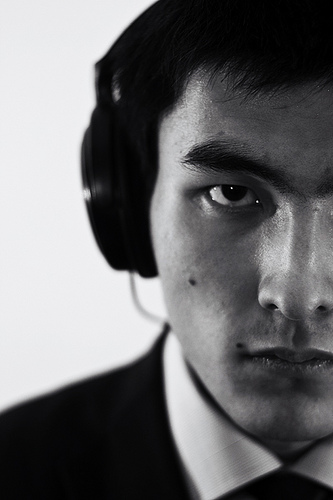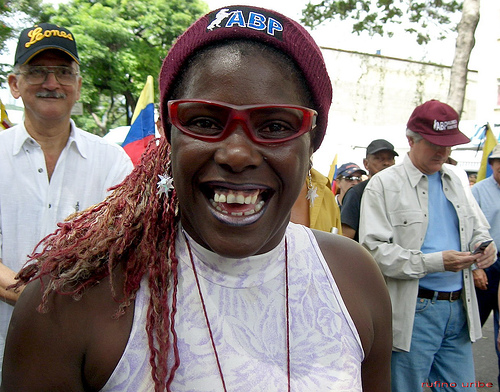Getting Great Pictures with a Basic Camera
Great pictures don't necessarily come from high-end cameras and expensive lenses. Here are tips that you can apply even when using cameras like the one on the IPhone. If you can use these principles to get great pictures using basic cameras, imagine how much better a photographer you'll be with serious photography gear!
Using Available Light
Available light usually means natural sunlight, but can also include available sources of artificial light, eg. an overhead dining table lamp. With the light positioned correctly, you can get professional looking pictures without any additional flash equipment.

Self Portrait III by Enkhtuvshin on flickr (licensed CC-BY)
Mind Your Composition
One element usually found in great pictures is great composition. Looking at the LCD you'll be able to see where you could ask your subject to move to the right, or move yourself, the photographer, to the left so that you avoid having a tree jutting out from behind the subject's head. This is even more crucial in basic cameras where you are unable to control depth of field to make the tree out of focus.
Use Complementary Light Sources
Take advantage of your surroundings when traveling. Imagine you want to take a picture of your spouse on a busy street in Hong Kong at night. Instead of resorting to using the built-in flash, get her/him to move closer to the rows of brightly lit shop signs so that they become the light source. Not only will they give a more natural color cast in relation to the surroundings, the light distribution on her/his face should also be more flattering.
Knowing Which Direction To Shoot
If you are taking a picture of a person with the sun behind you, you'll be able to get blue skies in an outdoor scene, assuming you actually had a blue sky on that day. If you had a blue sky on that day but the sun was shining at you, instead of behind you, you may get a washed out sky, with only very light tones of blue. This is because the auto metering on basic cameras will try to expose for both the person and the background, rarely achieving a good exposure for either one.
Anticipating the Right Moment
Pictures with people usually benefit from having some element of emotion. Even with the best camera, emotion in pictures is not possible if the photographer does not know when to press the shutter button, or is not ready when the emotional moment happens.
Avoid Clutter
In a scene that has too much clutter, look for a plain wall to place your subjects against. Plain colored backgrounds like a plexiglass panel, a wooden door or a brightly colored red wall also work well. For shooting still life, try reflective surfaces like a glass table or textured surfaces for an interesting background.
Keep these simple principles in mind on your next photo opportunity, and you'll be on your way to producing great pictures even with the most basic of camera gear.





